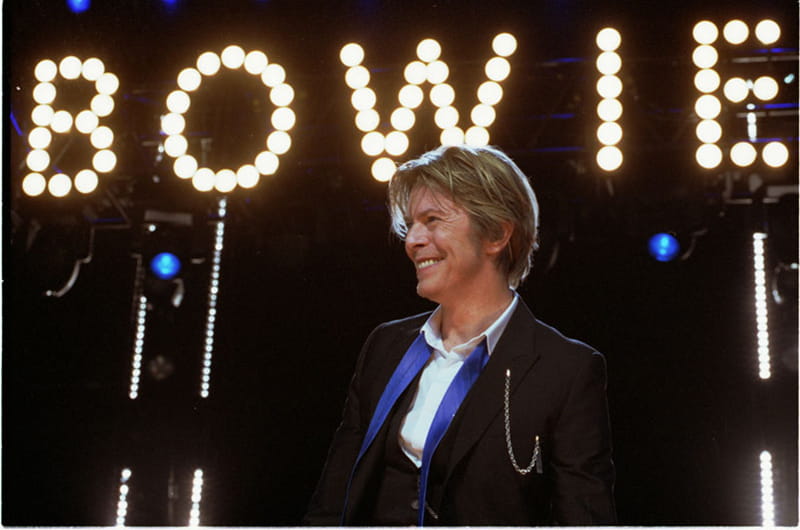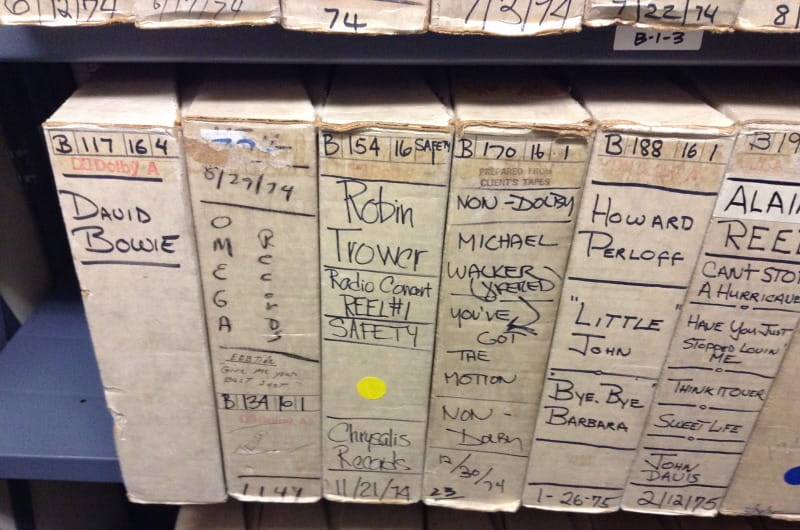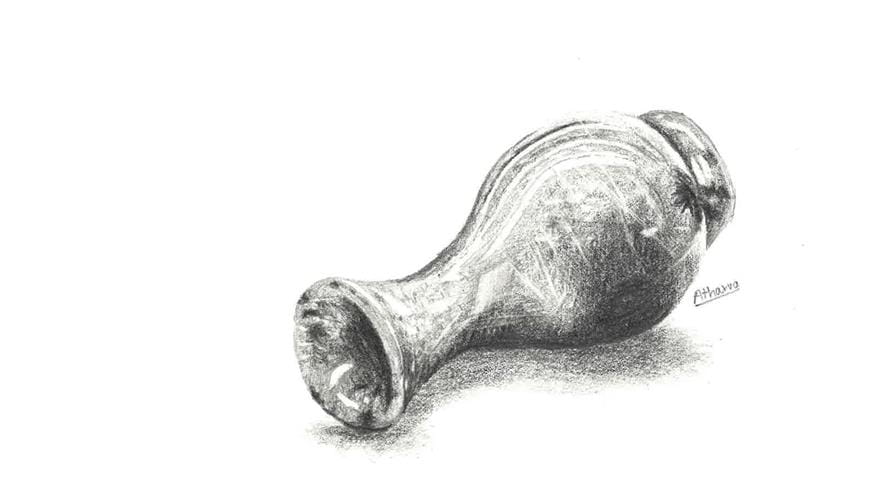How Did Drexel End Up With Rare David Bowie Recordings?

The “David Bowie Is” retrospective exhibit newly opened at the Chicago Museum of Modern Art is full of gems from the rock performer’s archives —handwritten lyrics, original costumes and album artwork that the legendary musician donated for all to see. But there’s one tiny part of Bowie’s five-decade legacy that is currently inconspicuously shelved in a basement of a building on Drexel’s campus.
From August to November of 1974, Bowie recorded part of his ninth studio album, “Young Americans,” at Philadephia’s Sigma Sound Studios. But only one tape from the sessions remained in the studio’s archive when its 6,200 master tapes were donated to Drexel in 2005. Now the tape is part of the Sigma Sound Studios Collection in the Drexel University Audio Archives, housed in the basement of University Crossings.
The assortment of tapes helps tell the story of Philly music from just before the founding of the studio (in 1968) to 1996, when Sigma switched from using analog tapes to digital recording. In the early ‘70s, the studio was known for producing Philly soul and “The Sound of Philadelphia,” and Bowie, who was known for his glam rock albums and personas, was looking for a change.
“Imagine it's 1974. Sigma was hot. Coming out of Philly and coming out of Sigma was hit record after hit record,” said Toby Seay, project director of the Audio Archives and an associate professor in the Westphal College of Media Arts & Design. “It would be very enticing for an artist like Bowie to say, ‘Let’s go there and see if some of that ‘magic’ wears off.’”

The session’s remaining 16-track tape, dated August 14, 1974, and labeled “Reel 4,” contains just five songs. These include alternate takes of songs that made the album, like reworked versions of the title track, and rejected songs that only appear on reissues, like “John, I’m Only Dancing (Again),” “It’s Gonna Be Me” and “Who Can I Be Now.” The single sheet of paper accompanying the tape only lists the tracks, takes, times and instruments used — no dates, no musician names and no inventory of its place alongside other possible tapes from the Bowie sessions.
Of course, the album is far from unknown. “Young Americans” reached the Top 10 List in America and the song “Fame,” which was later co-written and featured vocals from John Lennon in New York City, was Bowie’s first No. 1 single in America. But the records from the smash hit are less prominent.
“Bowie had the forethought from the very beginning to own his recordings. That's so rare,” said Seay. “From what I understand, he knows where every tape of every record he's recorded exists except for "Young Americans’ and ‘Station to Station.’”
The whereabouts of reels 1, 2, 3 and any possible recordings after reel 4 were unknown when Seay first started cataloging the collection. But that all changed when he discovered a seemingly inconsequential tape labeled “DB.” Upon listening, he realized it was actually a recording of a studio session in which “DB,” or “David Bowie,” and his musicians are heard chatting, going over song parts, and practicing “Who Can I Be Now” and “John, I’m Only Dancing (Again).”
“I don't know what enticed me to pull it off the shelf, but something did. And since then, I've looked for other tapes that might be labeled that and there aren't any,” Seay said.

At one point during the hour-long recording, Bowie asks backup singer Luther Vandross, who later won eight Grammy Awards for his solo career, to come in stronger on the “Who” in “Who Can I be Now.” After demonstrating the kind of vocal he wanted, Bowie self-deprecatingly tells Vandross, "I mean, I'm not as good as you, but you know what I mean."
“I don't know how illicit this was, but somebody just rolled a reel of tape in the studio while they were working,” Seay said. “Even though they’re making music in a studio, after a while you get that it's just people doing their job.”
It’s a revealing look into Bowie’s creative process, and the sessions as a whole. Additional insight into the sessions became clearer once Seay received copies of reels 1 and 2 — on behalf of Bowie himself.
Several years ago, Bowie discovered the tapes on ebay and arranged for the sender to give them to him. But first they were sent to Seay to be digitized, since he had previously sent Bowie the digital copies of the fourth reel. In exchange, Drexel kept digital copies of the newly discovered reels — so those recordings can only be found only in Bowie’s personal collection and Drexel’s collection.
Those tapes include other versions of songs heard on reel 4 and the secret recording, but there are also some surprises. Two tracks, “Lazer” and “Shilling the Rubes,” have never been released on any Bowie compilation or album.
While the physical Bowie tape is an important, and notable, part of the collection, and the “plastic soul” Bowie recorded was influenced by Philly soul, the collection has many other tapes from local artists and producers that round out the archive’s historical and cultural significance. Even though Bowie recorded in the Philly studio, he brought in New York studio sessions players and his producer, instead of using the Sigma Sound engineers and musicians.
Unfortunately, all of the Bowie tracks, and the thousands of others in the collection, can’t be put online by Drexel, which owns the physical rights, rather than the copyrights, on the tapes. Instead, Seay is working on a digital database of the tapes so people know what they can listen to at the studio, though it’s an arduous process involving digitizing and cataloging works.
Besides Bowie, there are tapes from Patti LaBelle, Teddy Pendergrass, Gladys Knight and many other artists. Who knows just what other treasures are hiding in the archives?
Drexel News is produced by
University Marketing and Communications.

